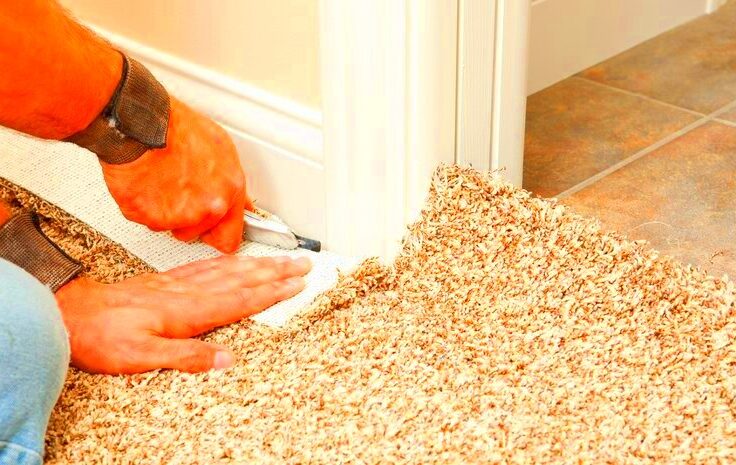Colorado Tenant Carpet Replacement Laws Explained
Carpets in rental properties see a lot of wear and tear over time. In Colorado, understanding the laws regarding carpet replacement is crucial for both tenants and landlords. These laws help clarify responsibilities, ensuring that living spaces remain safe and comfortable. Knowing your rights can make a big difference when it comes to carpet conditions and replacements. In this blog post, we’ll delve into the key aspects of carpet replacement laws, giving you the information you need to navigate this topic effectively.
Understanding Carpet Replacement Responsibilities

In Colorado, both landlords and tenants have specific responsibilities concerning carpet maintenance and replacement. Here are the main points to consider:
- Landlord Responsibilities: Landlords are generally responsible for providing a habitable living environment, which includes maintaining carpets in good condition. If the carpet becomes damaged or excessively worn, landlords must address the issue.
- Tenant Responsibilities: Tenants are expected to take care of the property they rent. This means keeping the carpets clean and avoiding damage. However, normal wear and tear is typically not the tenant’s responsibility.
It’s important for both parties to communicate openly about any carpet issues. Keeping a written record of any requests or repairs can also be beneficial.
When Landlords Are Required to Replace Carpets
Landlords in Colorado must replace carpets in certain situations. Here are some common scenarios when this obligation arises:
- Severe Damage: If the carpet is severely stained, ripped, or damaged beyond repair, landlords are usually required to replace it.
- Health and Safety Concerns: If the carpet poses a health risk, such as mold or allergens, landlords must take action to replace it.
- Lease Agreements: Sometimes, lease agreements explicitly state carpet replacement conditions. If the lease outlines specific terms, landlords must follow them.
Landlords should regularly inspect carpets to ensure they meet safety and quality standards. Timely replacements can prevent larger issues and keep tenants satisfied.
Tenant Rights Regarding Carpet Conditions
As a tenant in Colorado, you have specific rights when it comes to carpet conditions in your rental unit. Understanding these rights can help you advocate for a comfortable living environment. Here are some essential rights you should know:
- Right to Habitable Living Conditions: You have the right to live in a rental property that is safe and habitable. This includes well-maintained carpets that do not pose health risks.
- Right to Report Issues: If you notice problems with the carpet, such as damage or unsanitary conditions, you have the right to report these issues to your landlord without fear of retaliation.
- Right to Request Repairs: You can formally request carpet replacement or repair if it affects your quality of life. Your landlord is obligated to address these requests within a reasonable time frame.
- Right to Withhold Rent: In some cases, if the carpet is in poor condition and your landlord refuses to make necessary repairs, you may have the right to withhold rent until the issue is resolved. However, consult legal advice before taking this step.
Familiarizing yourself with these rights will empower you to take action if you encounter carpet-related issues in your rental home.
Steps for Tenants to Request Carpet Replacement
If you believe your carpet needs replacement, follow these steps to ensure your request is clear and effective:
- Document the Condition: Take photos of the carpet showing any damage, stains, or wear. This documentation will support your case.
- Review Your Lease: Check your lease agreement for any clauses related to carpet maintenance or replacement. Understanding your rights will help you make a stronger request.
- Communicate with Your Landlord: Reach out to your landlord through a written request. Be clear and concise about the issues, and include your documentation. Here’s a simple template you can use:
Dear [Landlord’s Name],
I hope this message finds you well. I would like to bring to your attention the condition of the carpet in my unit. It has [describe the issues]. I kindly request that you consider replacing it to ensure a safe and comfortable living environment.
Thank you for your attention to this matter.
Sincerely, [Your Name]
- Follow Up: If you don’t receive a response within a reasonable time, follow up with your landlord. Keep records of all communications.
- Seek Legal Advice: If your request is ignored, you may need to seek legal advice or contact a tenant’s rights organization for assistance.
By taking these steps, you can effectively communicate your needs and ensure your living space remains comfortable.
Disputes Over Carpet Replacement Issues
Disputes over carpet replacement can arise between tenants and landlords. Knowing how to handle these situations is crucial for both parties. Here’s how to approach these disputes:
- Open Communication: Start by discussing the issue openly with your landlord. Explain your concerns and try to reach a mutual understanding. Sometimes, a simple conversation can resolve the issue.
- Document Everything: Keep a record of all communications related to the carpet condition. This includes emails, texts, and notes from conversations. Documentation can serve as evidence if legal action is needed.
- Mediation: If discussions fail, consider mediation. A neutral third party can help facilitate a conversation and find a solution that works for both sides.
- Legal Action: As a last resort, you may need to take legal action if the issue remains unresolved. Consult a lawyer familiar with tenant rights in Colorado to understand your options.
It’s essential to approach disputes calmly and professionally. By following these steps, you can work towards a resolution that respects your rights as a tenant while also considering the landlord’s position.
Legal Resources for Tenants in Colorado
If you’re facing issues related to carpet conditions or replacement in your rental property, knowing where to turn for legal help is essential. Colorado has several resources available to assist tenants. Here’s a look at some key organizations and resources:
- Colorado Legal Services: This organization offers free legal assistance to low-income residents. They can help you understand your rights and provide guidance on how to address carpet issues. Visit their website for more information.
- Tenant Rights Coalition: This coalition advocates for tenants’ rights in Colorado. They provide resources and information about your rights regarding carpet maintenance and other housing issues.
- Local Legal Aid Offices: Many counties in Colorado have legal aid offices that offer assistance to tenants facing disputes with landlords. Check your county’s resources for available services.
- Online Resources: Websites like Nolo and LegalZoom offer articles and guides on tenant rights in Colorado. These resources can help you learn about carpet replacement laws and how to protect yourself.
- Housing Authorities: Your local housing authority can provide information on tenant rights and responsibilities. They can also help mediate disputes between tenants and landlords.
Utilizing these resources can empower you to advocate for your rights as a tenant and ensure a fair resolution to carpet-related issues.
Frequently Asked Questions
Here are some common questions tenants in Colorado may have about carpet replacement laws:
- What should I do if my carpet is damaged? Start by documenting the damage and contacting your landlord with a formal request for replacement or repair.
- Can I withhold rent if my landlord refuses to replace the carpet? Yes, but only after consulting legal advice, as this can lead to potential eviction if not handled correctly.
- Are there specific laws that protect tenants regarding carpet conditions? Yes, Colorado law mandates that landlords maintain rental properties in a habitable condition, which includes flooring.
- How long does a landlord have to respond to a carpet replacement request? While there’s no specific timeframe, landlords are expected to respond promptly and address urgent issues within a reasonable period.
- What if I disagree with my landlord about the condition of the carpet? Keep communication open and document all interactions. If needed, seek mediation or legal advice.
These questions cover some common concerns tenants face. If you have specific issues, consider reaching out to legal resources for more personalized advice.
Conclusion on Colorado Tenant Carpet Replacement Laws
Understanding your rights as a tenant regarding carpet conditions in Colorado is vital for ensuring a comfortable and safe living environment. The laws are designed to protect you from living in subpar conditions while also outlining your responsibilities. Remember that:
- Landlords must maintain carpets in a habitable condition and address replacement needs promptly.
- You have the right to request repairs and replacements if carpets are damaged or unhealthy.
- Utilize legal resources available to you if disputes arise or if your landlord is unresponsive.
By knowing your rights and following the appropriate steps, you can advocate for yourself effectively. Whether you’re dealing with minor wear and tear or significant carpet damage, understanding these laws empowers you to create a better living situation. Don’t hesitate to reach out for help if needed, and stay informed about your rights as a tenant in Colorado.


